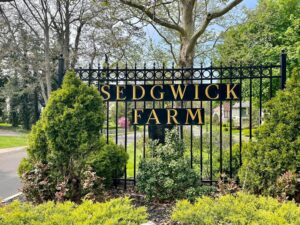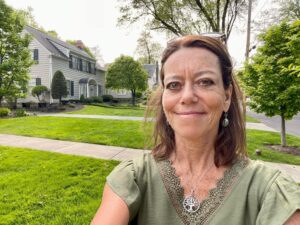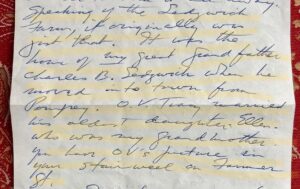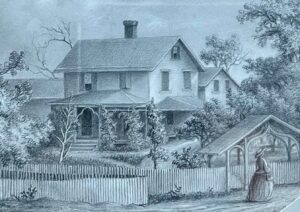Sedgwick Farm




May 17, 2023
When in Syracuse, New York, I enjoy visiting the neighborhood I grew up in – Sedgwick Farm. Sedgwick Farm is the city’s first historic district. It is special to me to visit the homes and walk the sidewalks where I was raised, as were my mother, her brothers, their father, grandfather, and great grandfather. From my maternal grandfather I not only learned about Osgood Tracy’s Civil War letters but that the 85 acres of land comprising ‘Sedgwick Farm’ was originally owned by his great grandfather, Charles Baldwin Sedgwick, and his second wife, Deborah ‘Dora’ Gannett of Boston.
Sedgwick was a staunch abolitionist; founding member of Syracuse’s Vigilance Committee; helped plan a jail breakout in 1850 of an escaped enslaved man named William “Jerry” Henry (“The Jerry Rescue”) who had been arrested under enforcement of The Fugitive Slave Act; and represented in trial the white men who freed Jerry from irons, sending him to Canada through The Underground Railroad.
A two term N.Y. State representative before and during the Civil War, Sedgwick was the first person to give a speech on the House floor denouncing slavery (1860). Sedgwick’s motto on the slavery issue was to accept “No compromises, no concessions.” Sedgwick, in fact, refused to leave Washington until “every slave in every state is free.”
Even when tragedy struck the Sedgwick homestead, on April 16, 1862 when Charles and Dora’s 12 year old son Frankie and his best friend Tommy Barnes, only son of George and Rebecca Barnes (Sedgwick’s friends, neighbors, and fellow freedom fighters) drown in a pond behind the Sedgwick homestead, Charles Sedgwick returned to Washington to carry on the fight to end slavery. Dora, an abolitionist herself, regularly received letters her husband wrote from Washington home to her on “The Farm,” where she tried managing her grief, running the farm, and caring for their three remaining children, and her two step children, Nellie and Charlie.
My great-great grandfather, Civil War veteran Osgood Tracy, married Charles Sedgwick’s daughter Nellie in 1867. Charles and Dora had homes built for Osgood, Nellie, and then their sons in the first block of what today is Sedgwick Drive and one on Brattle Road, named for Dora’s father. The rest of the land was later subdivided and sold in 1907 for the Sedgwick and Tracy families by their son, my great grandfather, James Grant Tracy, who was named president of the Sedgwick Farm Land Company.
Sedgwick Farm Neighborhood Association was honored this past May by the Onondaga Historical Association. I think Charles Sedgwick would be pleased, as well as his family. I was and know my maternal grandfather would be. And I was so pleased to speak at the celebration with over 200 in attendance.
Posted on Categories BLOG Sarah Tracy Burrows
Sarah Tracy Burrows